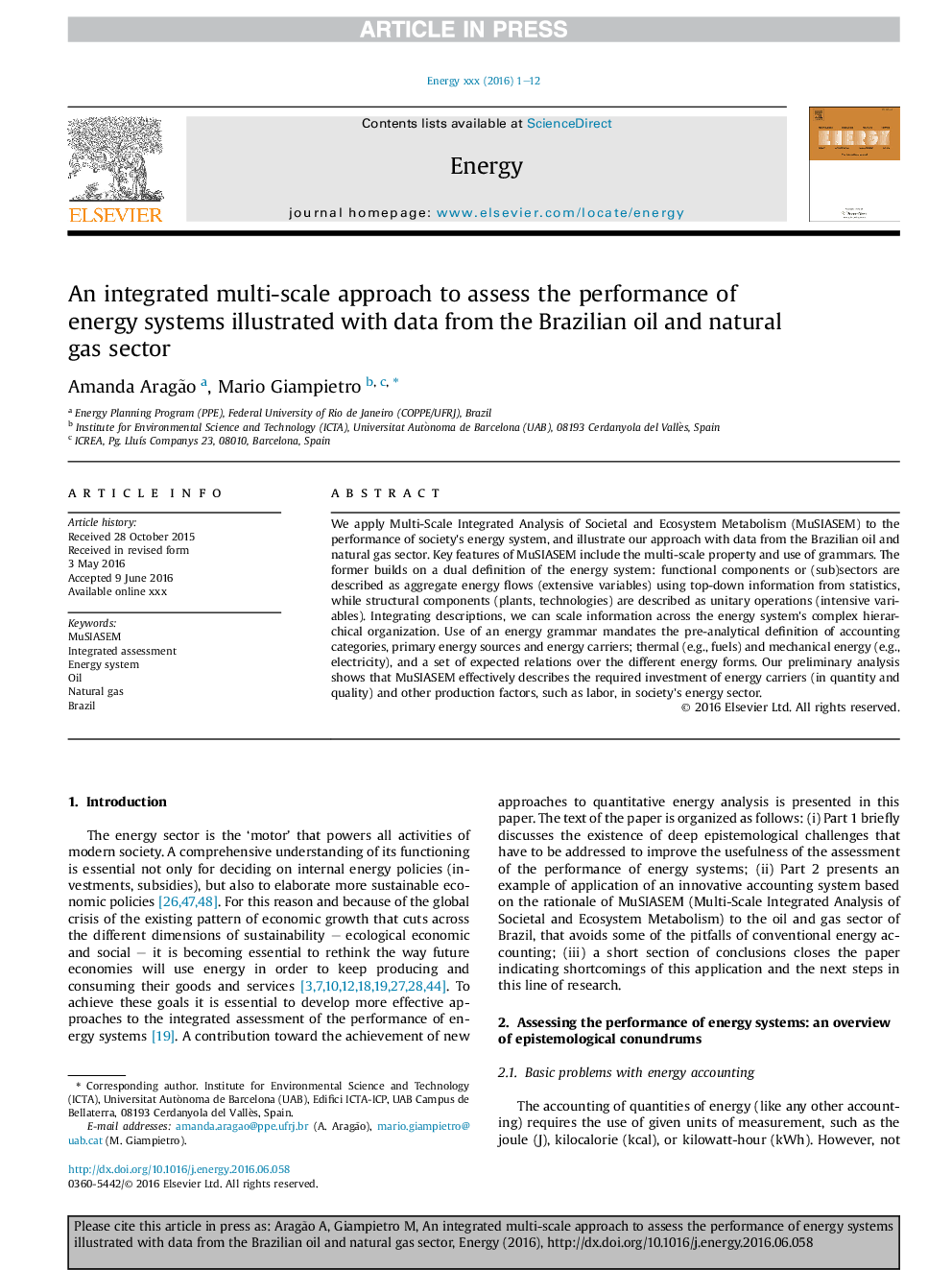| Article ID | Journal | Published Year | Pages | File Type |
|---|---|---|---|---|
| 5476638 | Energy | 2016 | 12 Pages |
Abstract
We apply Multi-Scale Integrated Analysis of Societal and Ecosystem Metabolism (MuSIASEM) to the performance of society's energy system, and illustrate our approach with data from the Brazilian oil and natural gas sector. Key features of MuSIASEM include the multi-scale property and use of grammars. The former builds on a dual definition of the energy system: functional components or (sub)sectors are described as aggregate energy flows (extensive variables) using top-down information from statistics, while structural components (plants, technologies) are described as unitary operations (intensive variables). Integrating descriptions, we can scale information across the energy system's complex hierarchical organization. Use of an energy grammar mandates the pre-analytical definition of accounting categories, primary energy sources and energy carriers; thermal (e.g., fuels) and mechanical energy (e.g., electricity), and a set of expected relations over the different energy forms. Our preliminary analysis shows that MuSIASEM effectively describes the required investment of energy carriers (in quantity and quality) and other production factors, such as labor, in society's energy sector.
Related Topics
Physical Sciences and Engineering
Energy
Energy (General)
Authors
Amanda Aragão, Mario Giampietro,
